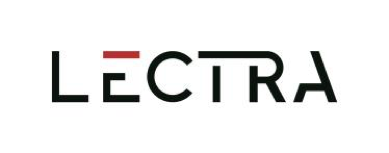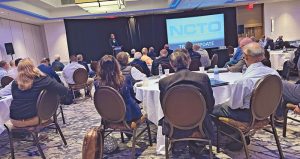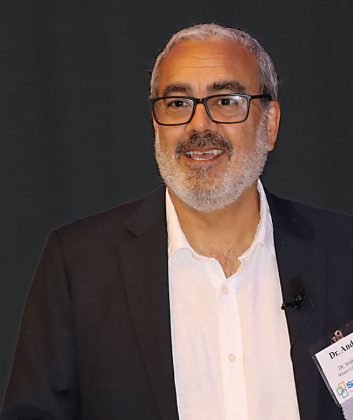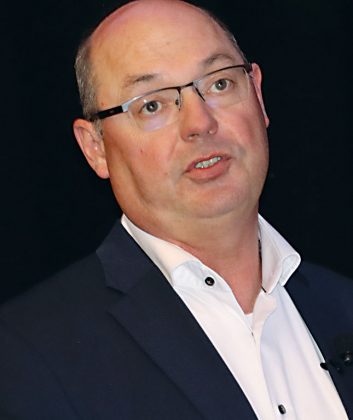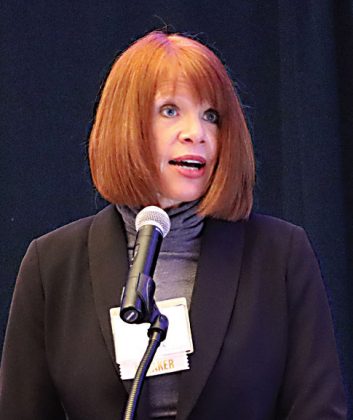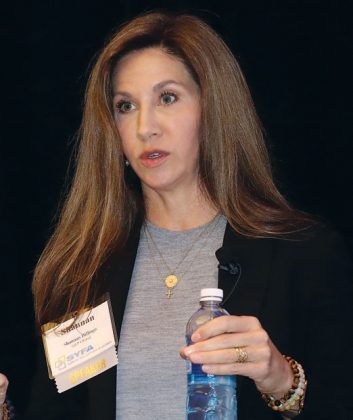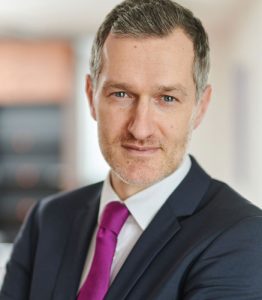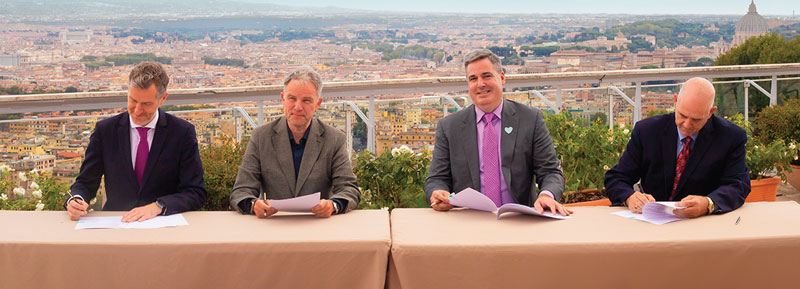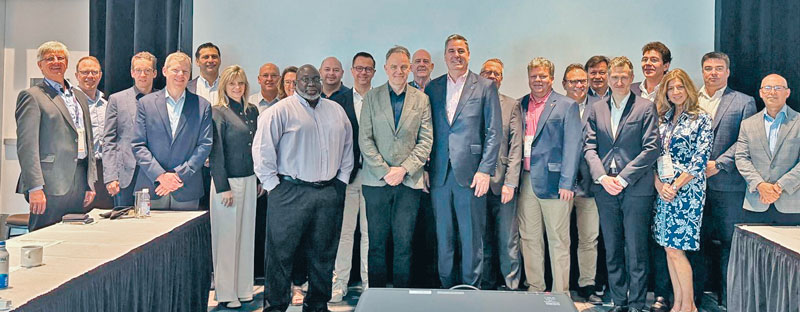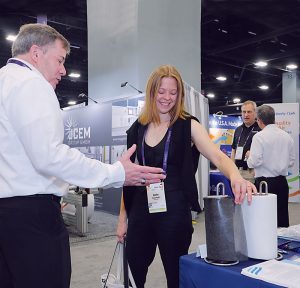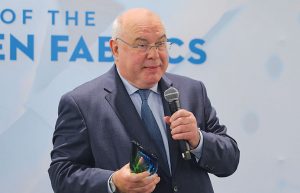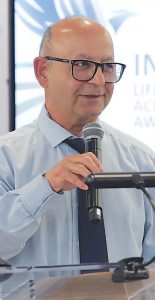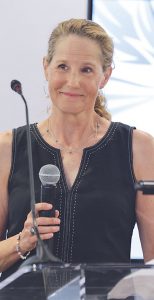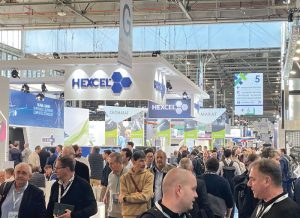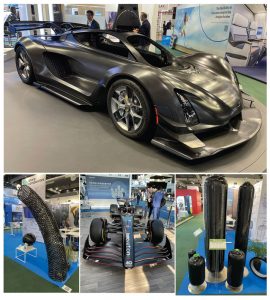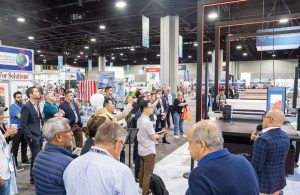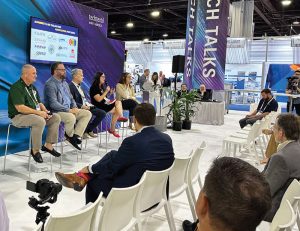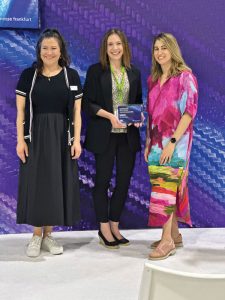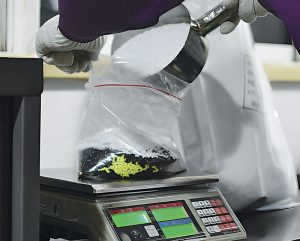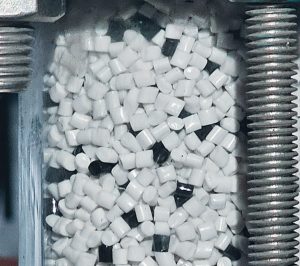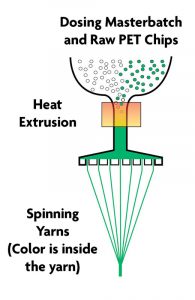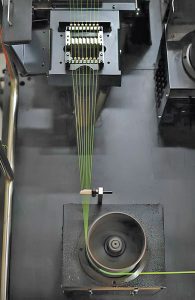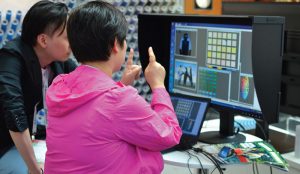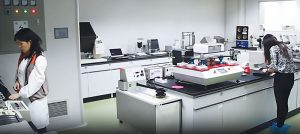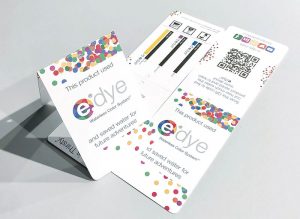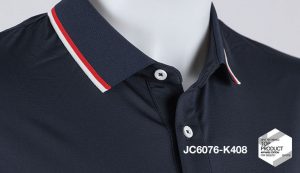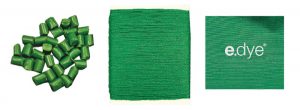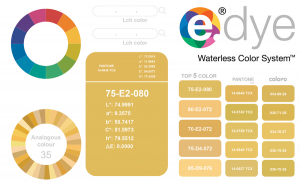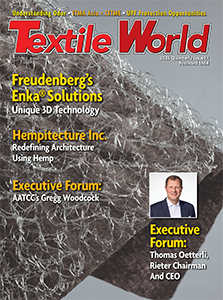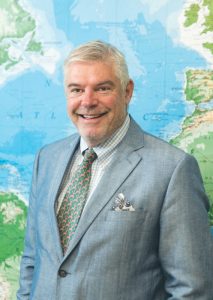
Established in 2014, Zimmer America Recycling Solutions has found a foothold providing recycling equipment focused on PET — from single machines to complete recycling systems.
By James M. Borneman, Editor In Chief
To many in the textile industry, the name Zimmer is synonymous with textile printing. The family’s contribution to rotary screen printing is notable, and later developments for digital printing are significant.
More recently, Roland Zimmer has charted a new course — one focused on bringing technologies to bear for the daunting task of plastic recycling.
In 1970, Zimmer established roots in the United States as a subsidiary of Zimmer Austria functioning as Johannes Zimmer Service and Sales, the U.S. branch of the Austria-based headquarters. Zimmer America Corp. was established in 1985 by Roland J.P. Zimmer.
Rotary textile printing is a significant segment in the global textile industry, and throughout the 1970s, 80s and 90s was the gold standard for applying artist’s designs to fabrics in apparel, bedding, home furnishings and military apparel, among other applications. Zimmer’s rotary printing machines, with their “open bearing” design, evolved with innovations that brought speed, efficiency and flexibility to the robust textile printing segment. Later developments brought digital printing to the fore with transformational change, and in the context of the printed textile segment, revolutionized the way textiles are printed.
In a turn of the page, Roland established Zimmer America Recycling Solutions in 2014. This marked a new direction for Zimmer that built on the company’s industrial solutions mentality of representing, selling, installing, and servicing industrial machinery and technology.
Whether for industrial cleaning, plastic technologies, textile solutions or consulting, Roland Zimmer has embraced a broad array of opportunities that benefit from his core competencies.
He recently sat down with Textile World to share some of the challenges and benefits of his textile legacy and the many opportunities that lie ahead.
TW: You have a long and very personal history in textiles. When did you develop an interest in recycling and how did it complement your experience bringing textile technologies to industry?
Zimmer: Good question and it really happened in a kind of natural way. In a sense, you know the history, the demand for textile machinery was steadily going down and sometimes faster than acceptable.
Since the late 80s early 90s, I was faced with the fact that textile machinery was less and less in demand and we had to look around, of course, for some other machinery. I made a connection with somebody that worked in the machinery industry who did washing lines for textile washing — continuous wash ranges. There was another company developing washing lines for plastics, and I had a personal connection to a man who joined this new company. He opened my eyes to this completely new industry with plastic recycling washing lines, and I looked at that and said, “you know, it’s interesting.”
I knew nothing about plastic recycling, but I thought there was a very strong parallel here.
TW: What does this new direction share with your textile experience, and what is different?
Zimmer: The parallel is that it’s machinery that has something in the beginning, coming in — not virgin like the printing machine — but a plastic, in this case, plastic to be recycled.
And then there’s a process that takes place, and it’s quite a complex process that takes place in the washing line.
There is a plastic washing line, and at the end something else comes out and then in the middle, you have bearings and rolls and all kinds of things that I was very familiar with from the textile printing industry. It’s another process in another industry, but it has an infeed, it has an exit, and it has a process in between, so I was able mentally make the bridge to completely understand what we are talking about.
TW: So, you were comfortable with the connection? Controlling a process, for example?
Zimmer: The connection is that we use the same Siemens S 7 PLC for controlling the process that we were using on the printing machines as is used on the recycling equipment to control the process.
Another interesting aspect was that some of the folks I was dealing with for years, especially the carpet manufacturers in Dalton, Ga., were very active in recycling. They discovered plastic as a resource for making polyester fiber out of recycled plastic, and you know that right now they are some of the large players in the plastic recycling world because they buy plastic bottles and have their own processing of making fibers. Then these fibers end up in carpet.
This was a market I knew very well from the carpet printing market and all of a sudden, it turns out these carpet printers are not just carpet printers using the Zimmer CHROMOJET, but they’re also fiber makers using recycled plastic bottles to make carpet. It was a very astonishing sequence of events that led me into the polyethylene terephthalate (PET) recycling world.
TW: What recycling technologies is Zimmer America focused on and how are is the technology used?
Zimmer: It starts really at the core of the recycling of PET.This is a widely used plastic material in the container industry for bottles — so every plastic bottle of Coke, Pepsi and water, and anything else you can think of is basically PET because this material won the battle against other plastics for this application.
The advantage is that PET has a 100 percent recyclable property in the sense that out of a recycled, shredded, pelletized and extruded plastic, I can make another plastic bottle. This 100 percent recyclability is what makes it so attractive.
TW: In the beginning, what machinery interested you?
Zimmer: A Germany-based company called STF developed their own recycling. Interesting, not only making machinery, but also developed as a recycler.
The line of machinery and the way STF recycles PET plastic is mechanical, so there’s some water involved, there is some friction involved and transportation from one tank to another involved, but it’s a very, very simple process. It’s basically an oversized washing machine, not unlike a washing machine at your house.This basically mechanical process is relatively simple, and it takes a little time, some heat, some water, and at the end of the day you’re washing the flakes of a plastic bottle to a clean state.
Then there is another process — solid state polymerization, or SSP —that uses heat, time and a vacuum to remove all impurities embedded in the PET after the washing. The molecular structure of PET is rebuilt because overtime, and with some ultraviolet exposure, these molecular chains break.
Another important part is reestablishing and adjusting the intrinsic viscosity, or IV. This must be corrected in the PET before it becomes pellets in order to make new bottles out of it. Because the bottle blowing and filling lines are very high-speed processes and things happen very quickly. For that reason, the IV must be exactly correct.
So, at the end of the day, the recycled PET and the virgin PET molecule look exactly the same and the properties are also the same. That’s why it’s 100 percent recyclable, because you can make another bottle out of it.
TW: How was a relationship with STF developed?
Zimmer: As I came to know STF, I also found out that they are not present in the United States. When I visited the first time I said “Look, I’m very familiar with you being a European, with what you do here as European machinery manufacturers, and I’m very familiar with this American market. And I noticed that you have no activity in the United States yet.” I told STF that I would very much like to take my know-how of the U.S. market and how industrial companies buy machinery from Europe and from other industrial companies. That’s how the relationship started.
STF went for it, and they said,“Well, we are where we thought about doing something in America, but we haven’t done anything yet.” So, I said “Let me do it. I’ll do it for you.”
TW: Among others, Zimmer has taken on two large projects — one in the Dominican Republic, and one in Hilo, Hawaii. Can you share some details about these projects?
Zimmer: These two projects represent ideal customers in that both are new to recycling. These companies have different backgrounds.
The company in the Dominican Republic is in the waste space. It has waste sorting lines for household waste, so general and household waste including plastics, and they are expanding. It holds, sorts, and sells reusable and recyclable waste items. It is building a complete plant for taking the PET or the plastic content, out of the municipal household waste. Municipal waste consists of a lot of plastic. There’s some paper and organic matter also, but PET — as a plastic for all kinds of containers — has become such a major portion of household waste. More and more people are recognizing that if we already sort the waste and now here we have all this plastic, why don’t we go the next step and take the plastic and make a new product — for example, recyclable PET bottles —and that’s what this customer in the Domincan Republic is doing.
The customer in Hawaii is the premium bottled water company Waiakea. It produces water bottles every day and sells them all over the United States. It has the idea to be circular in its own production. It wants to make sure is that every bottle in Hawaii gets recycled back into a bottle. This is the first Hawaii-based PET recycling factory that we are building in Hilo towards that goal.

TW: What do you observe about the future of recycling?
Zimmer: The fact of the matter is that recycling plastic is in its very, very infancy — not only in America, but worldwide. We are producing a tremendous amount of plastic every year and it’s increasing because China is a big player now in plastic.
I think in America, the statistic is that from all plastic that is sold in various forms and shapes, including bottles and non-bottle plastic, I think we are under — way, way, way, under — 10 percent recycled.
That means that 90 percent of the plastic ends up in the landfill, and what I want is for this to change.
There are only two U.S. states that have said they will be part of the change. Obviously, I can’t change that personally, but I can be part of the change to a circular economy where we understand that plastic originates from a natural resource that is limited.
The way we should look at that resource is that whatever we make out of it — for example, plastic — should be first-of-all, easy to recycle — which a bottle is. But we should live in a world where we can maintain our enormous appetite for new plastic largely with the plastic we have already made once before and become a real circular economy. That’s the goal.
TW: What opportunities lie ahead and what part will they play in textiles?
Zimmer: The industry is now concerning itself with textile recycling for the same reason. I already spoke about carpet producers, which previously used mostly nylon. They have switched in the last 10 years and PET is now used in about 50 percent of commercial carpet, which again brings attention to the recyclability of PET.
Recycling is becoming a thing, slowly. And now textiles, since some are made using PET, are very interesting to watch.Textiles are things to be recycled, but how do you recycle textiles? It’s not easy because textiles are made from different items and a textile garment may be made using not a singular component, so maybe it’s not only PET. But I think textiles is the next frontier for recycling.
I think also that as so-called extended producer responsibility gets talked about more and more, and in the plastic world, extended producer responsibility is really becoming synonymous with a circular economy.
TW: Is extended producer responsibility (EPR) a change agent?
Zimmer: EPR is just a way to try to make the producers of things more responsible at the end of life of the products because we all realized that we can’t fill up those big holes in the earth with everything that we throw away.
So, we wait and see. This shift needs to be happening in the way we look at our resources —the continuous use of resources, not being end of life, buried in landfill etc.
Whatever you do, have the circularity of your production in mind whatever it is. We must get used to the idea that for everything we produce, the resources we use to make them have an eventual end, right?
So how can we reuse them, and not fill up a place with garbage? This world is beautiful planet, and to produce things with the idea of using those things many, many, times down the road is the way.
Editor’s Note: STF Group, with a focus on PET post-consumer bottles, is a manufacturer of plastic recycling and washing machinery and has delivered some 60 plants worldwide. Reportedly, STF recycles more than 130,000 tons of PET bottles per year into high quality flakes in its own plants in Germany and is considered one of Europe largest recyclers. Zimmer Austria continues to offer textile coating ranges, digital, flat bed and rotary screen-printing machinery and loop steamers. It is represented by Fi-Tech Inc., Midlothian,Va.
2025 Quarterly Issue II


